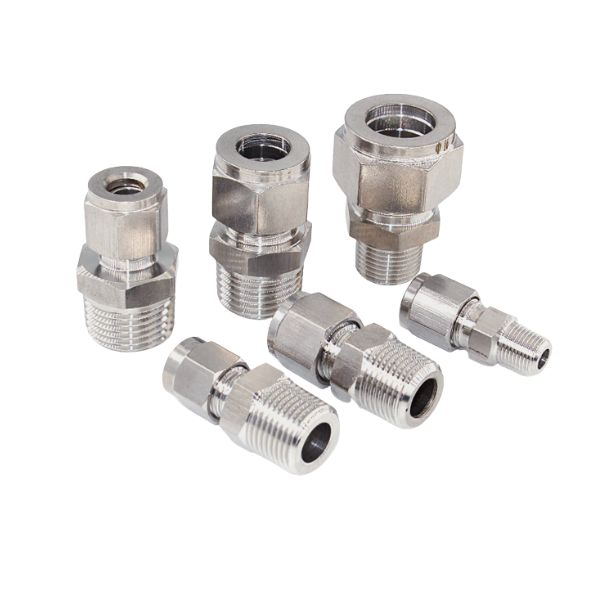Instrumentation fittings serve as the connective tissue within the intricate web of industrial measurement and control systems. Analogous to the essential role of veins and arteries in the human body, these fittings ensure the efficient transmission of fluids and gases, facilitating the accurate monitoring and regulation of processes across a multitude of applications. Within this realm, an instrumentation fitting manufacturer emerges as a key player—crafting the components that are fundamental to the integrity and functionality of complex instrumentation systems.
To unpack the significance of instrumentation fitting manufacturers, it is crucial to comprehend the nuanced relationship between design, production, and application. These manufacturers specialize in creating fittings that are tailored for specific uses, capable of withstanding a plethora of pressures and temperatures. The diverse nature of industries—from oil and gas to pharmaceuticals—demands that these fittings be manufactured with precision and expertise, imbued with attributes that ensure reliability and durability.
At the heart of this operation lies the dichotomy of innovation and tradition. Manufacturers often blend state-of-the-art technology with time-tested manufacturing processes. This synthesis results in products that not only meet but exceed industry standards, which are often dictated by rigorous safety and performance protocols. In a world striving for increasingly refined measurements, the importance of accuracy cannot be overstated. For manufacturers, the ability to produce fittings that contribute to minimizing errors in measurement can be likened to an artist’s fine brushwork that creates the intricate details of a masterpiece.
The spectrum of instrumentation fittings is vast, including compression fittings, flare fittings, and bulkhead fittings, each designed to serve unique functions. Compression fittings, for example, provide a reliable means of connecting pipes with a secure, leak-free seal, often used in scenarios demanding high integrity, such as chemical processing. Similarly, flare fittings possess a tapered exterior designed to create a tight seal when engaged, favored in high-pressure applications.
The manufacturing of these fittings necessitates an intricate understanding of materials, particularly their physical and chemical properties. Common materials like stainless steel, brass, and plastic are often employed, chosen for their resistance to corrosion, fatigue, and temperature fluctuations. The choice of material is a critical step for the manufacturer; it is akin to a composer selecting the right instruments for a symphony. A brass fitting may resonate with warmth and charm in one context, while a stainless steel counterpart might provide the necessary robustness in another. Each decision echoes through performance metrics and applications.
Moreover, quality assurance becomes a cornerstone of any reputable instrumentation fitting manufacturer. The quest for perfection involves not only compliance with international standards but also the implementation of rigorous testing and validation procedures. These protocols may include pneumatic and hydraulic testing, material integrity assessments, and dimensional inspections that ascertain conformance to specifications. This meticulous attention to detail ensures that each fitting delivered to clients is a testament to excellence, much like a scholar’s painstaking research leading to an undisputed publication.
Furthermore, the allure of customization cannot be overlooked in this field. The capacity to cater to specific customer requirements transforms a standard product into a bespoke solution. Manufacturers often engage in collaborative engineering efforts with clients, a symbiotic relationship that fosters innovation and produces tailored fittings designed for unique operational needs. It resembles a sculptor interpreting a client’s vision, sculpting a creation that not only fits but also elevates the purpose it serves.
In examining the broader implications of instrumentation fitting manufacturing, one encounters the interplay between these components and global markets. The transnational nature of trade in industrial components necessitates that manufacturers adhere to international regulatory standards, often requiring a nuanced understanding of the diverse compliance landscapes across regions. It is a challenge akin to navigating a labyrinth—where each turn could lead to either opportunity or pitfalls depending on the manufacturer’s preparedness and adaptability.
Moreover, as industries increasingly turn towards sustainability, a shift is evident in the materials and processes used in manufacturing. Eco-friendly initiatives, such as the utilization of recycled materials and the reduction of waste, begin to shape modern manufacturing practices. This evolving paradigm invites manufacturers to innovate, fostering a dialogue between tradition and progressive environmental responsibility.
The quest for enhancing performance and innovation in instrumentation fitting manufacturing does not occur in a vacuum. Engaging with the ever-advancing technology landscape, manufacturers leverage automation, additive manufacturing, and predictive analytics to streamline processes and enhance product offerings. Collectively, these advancements herald a new era of optimization where efficiency can be realized without sacrificing quality.
In conclusion, an instrumentation fitting manufacturer epitomizes the intersection of skill, technology, and industrial necessity. Comparable to the architect of a renowned structure, these entities construct the essential frameworks that support the edifice of industrial operations. Through meticulous craftsmanship, rigorous standards, and evolving practices, they cultivate fittings that not only serve their practical purpose but also embody a legacy of excellence within the field of instrumentation. As industries advance and evolve, so too will the realm of instrumentation fitting manufacturing, illuminating the path forward for precision and reliability in measurement systems.










